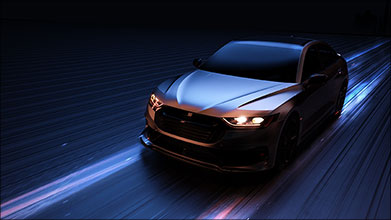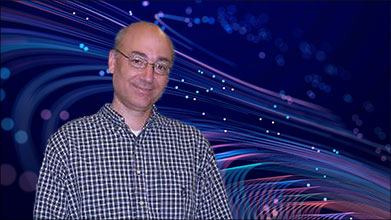Cloud native EDA tools & pre-optimized hardware platforms
Astronomy was headline news on July 12, with the release of the amazing first full-color images from NASA’s James Webb Space Telescope (JWST).
This amazing space telescope features an impressive array of optical instruments and technologies–a true feat of engineering. Three near-IR instruments and one mid-IR instrument are on board the JWST: NIRCam, NIRSpec, MIRI, and the Fine Guidance Sensor and Near IR Imager and Slitless Spectrograph (FGS/NIRSS). Synopsys chief electro-optical engineer Mark Kahan, who served on JWST’s product integrity team, was asked to help “build something that will absolutely, positively work,”1 since JWST would be out of reach once launched.
However, let’s not forget about the Hubble Space Telescope.
When launched in 1990, Hubble was a groundbreaking telescope that brought us breathtaking pictures of the universe. “The entire landscape of research is defined by what Hubble saw, and left us speculating about what we might learn if we could see just a little more,” says Matt Caplan, an assistant professor of physics at Illinois State University.2

Even so, the Hubble had a flaw: a significant spherical aberration.
NASA developed a bold plan to fix the Hubble by replacing one instrument completely to include corrective optics. The corrective optics were installed during the 1st Servicing Mission in 1993. The mission was a great success and restored the Hubble to its full capabilities.3 Synopsys (formerly Optical Research Associates) engineers, including Kevin Thompson, Mike Rodgers, and Mark Kahan, along with CODE V optical design software, all played important roles in this work.a,b,c,d
We have learned a great deal about our universe from the Hubble. And it’s still going strong, with no plans to shut it down, according to NASA. JWST isn’t Hubble’s replacement — JWST is its successor. It will work in tandem with Hubble and wouldn’t exist in a world without it. “The JWST science program will be based on the legacy of more than three decades of Hubble science,” notes Morgan Van Arsdall, systems and deputy program manager for the Hubble Space Telescope at Lockheed Martin.4
The Hubble can observe in the visible, ultraviolet, and near-infrared regions (the instrument suite has varied over the years but covers 0.1μm through 2.5 μme), while the JWST observes in a much lower frequency range — from long-wavelength visible light through the infrared (0.6 μm through 28.3 μm).5 Hubble is still the top candidate for scrutinizing galaxies moving along the X or Y axis, rather than the Z axis.6 Whether the images are from the Hubble or JWST, images will need to employ a technique called chromatic ordering when processing wavelength data.

Though the JWST may be the shiniest new observatory in space, both the Hubble and JWST have unique strengths, missions, and technological glories. They complement each other. We look forward to advancing our knowledge about the universe with the discoveries from both telescopes.
How about imagining the JWST as the Hubble’s new BFF in space?
Learn More
References
- https://spectrum.ieee.org/james-webb-telescope-optics
- https://www.cnet.com/science/space/features/no-nasas-revolutionary-hubble-space-telescope-is-not-done-yet
- https://www.cnet.com/science/space/features/no-nasas-revolutionary-hubble-space-telescope-is-not-done-yet
- https://www.photonics.com/Articles/Photonics_Technologies_at_the_Fore_as_First_James/a68180
- https://www.cnet.com/science/space/features/no-nasas-revolutionary-hubble-space-telescope-is-not-done-yet
- https://www.nasa.gov/content/goddard/hubble-space-telescope-science-instruments
- Kevin P. Thompson, Robert Kestner, J. Michael Rodgers, Dan Bajuk, “Validation of the corrective optics on the Hubble Space Telescope 1st Servicing Mission,” J. Astron. Telesc. Instrum. Syst. 2(3), 034001 (2016), doi: 10.1117/1.JATIS.2.3.034001.
- Jeff Hecht, “Saving Hubble,” Optics & Photonics, March 2013, pp. 43-49.
- H. John Wood, “Hubble Space Telescope: Engineering For Recovery,” Optics & Photonics News, November 1993, Vol. , No. 11, pp. 8-9.
- Mark A. Kahan, “Optical Testing and Verification on HST,” Optics & Photonics News, November 1993, pp. 28-34.









